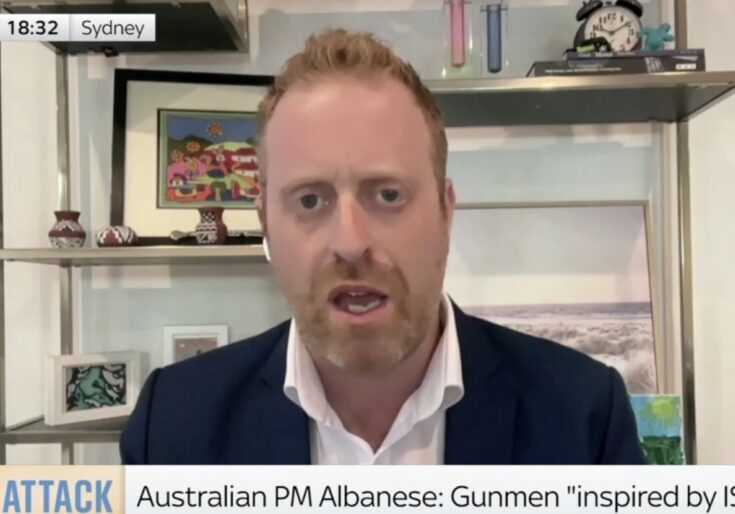FRESH AIR
Rafah set to re-open, but aid had already been surging into Gaza without it
May 31, 2024 | Alana Schetzer

Egypt has reportedly finally agreed to reopen the Rafah Crossing in southern Gaza, following a three-week stand-off with Israel and the United States that began after the IDF took control of the crossing on the Gaza side on May 7.
As part of the agreement – which followed intense pressure on Cairo from the US – Israel will remove its troops from the immediate area of the crossing and hand over control of the border to an international organisation. Until one can be found, control will be temporarily handed to Palestinians known to have no links to Hamas or any other terrorist groups.
Egypt closed the border, which blocked thousands of humanitarian aid trucks’ access to enter Gaza, because it did not want to be seen to be cooperating with Israel and because it opposes Israel operating along the Gaza-Egypt border.
Despite false media reports alleging it was Israel keeping the Rafah crossing closed, Egypt’s Foreign Minister Sameh Shoukry admitted Cairo was the one keeping the crossing closed on May 20, claiming rather disingenuously that the Israeli military presence and operations there put truck drivers in danger, which has led to the cessation of aid crossing the border.
This latest arrangement follows Egypt’s agreement on May 24 to stop blocking aid going through Egypt to the other major crossing into southern Gaza, Kerem Shalom on the Israeli-Gaza border. In its anger over Israel’s presence in Rafah, Egypt refused to allow any aid to cross its territory to reach Gaza, until a phone call from US President Joe Biden to Egyptian President Sisi on May 24.
Before that, the Biden Administration was becoming openly critical of Egypt’s obstruction of aid. “We do not believe that aid should be held back for any reason whatsoever. Kerem Shalom is open. The Israelis have it open. And that aid should be going through Kerem Shalom,” a senior Administration official said on May 22.
Israeli Minister Ron Dermer said on May 23, “Right now, Egypt is withholding 2,000 trucks of humanitarian assistance from going into Gaza because they have a political issue about the Rafah crossing.” A UN document appeared to confirm Dermer’s figures were accurate.
An unreported surge in aid
There is no doubt that the Egyptian refusal to allow any aid trucks to pass through its territory – which had previously been the most important route for aid – to either Rafah or Kerem Shalom for the period from May 7 and May 24 caused a drop in aid delivery. This is especially true with respect to southern Gaza – though the three crossings Israel opened into northern Gaza remained operational.
In addition, on May 23, it was reported that more than one million pounds of humanitarian assistance had been delivered and transferred to Gaza via the new US-built pier off the coast of Gaza after it began operation on May 17. That pier was damaged by rough weather on May 25, and is now out of action for approximately one week pending repairs.
Despite this, in the last few days, even before the agreement to re-open Rafah was announced, there appears to have been a large surge in aid entering Gaza that most of the media has failed to report. According to the Coordination of Government Activities in the Territories: Judea and Samaria and towards the Gaza Strip (COGAT) – the IDF department responsible for overseeing the entry of aid to Gaza – here are the number of aid trucks that crossed the border into Gaza over the past week and a half on various days (no data was available on a few days).
- May 31: 251 humanitarian aid trucks, 145 of which came from Egypt. Aid included flour and tens of thousands of vaccines
- May 29: 335 humanitarian aid trucks, which included 267,000 litres of fuel and two mobile maternity rooms
- May 27: More than 370 humanitarian aid trucks, including 154 aid trucks from Egypt
- May 26: 360 humanitarian aid trucks, plus 37 pallets airdropped over Gaza
- May 23: 320 humanitarian aid trucks, including 7 fuel trucks, plus 45 pallets of aid airdropped
- May 22: 298 humanitarian aid trucks
- May 21: 451 humanitarian aid trucks, plus 12 aid trucks arrived via the US-built pier
- May 20: 402 humanitarian aid trucks
COGAT also reported that, overall, in the week leading up to May 26, a total of 1,981 aid trucks entered Gaza.
By way of overall comparison, the period between January and April saw an average of 124 aid trucks enter Gaza daily. However, this did reach a definite peak in April.
Indeed, the White House confirmed in mid-April that there had been a surge in the amount of aid being delivered to Gaza. “The aid has increased, and quite dramatically in just the last few days,” White House National Security spokesperson John Kirby said.
In April, compared to March, the amount of food delivered was up 26.6 per cent (106,210 vs 78,879 tonnes); water was up 19.4 per cent (4,032 vs 3,242 tonnes); medical supplies was up 21.9 per cent (2,535 vs 1,779 tonnes); and shelter equipment was up 41.7 per cent (14,990 vs 10,575 tonnes).
Yet the past week and a half has seen sustained aid levels considerably higher than those for April – and this surge started even before Egypt agreed to allow aid to cross its territory to go to Kerem Shalom on May 24 lor agreed to re-open Rafah yesterday. It is simply odd that this large apparent surge in aid remains almost completely unreported outside Israel.
RELATED ARTICLES

The Government’s actions still fall short: Joel Burnie on FDD Morning Brief

“The writing was on the wall for a number of years”: Colin Rubenstein on Channel 7 Weekend Sunrise





















